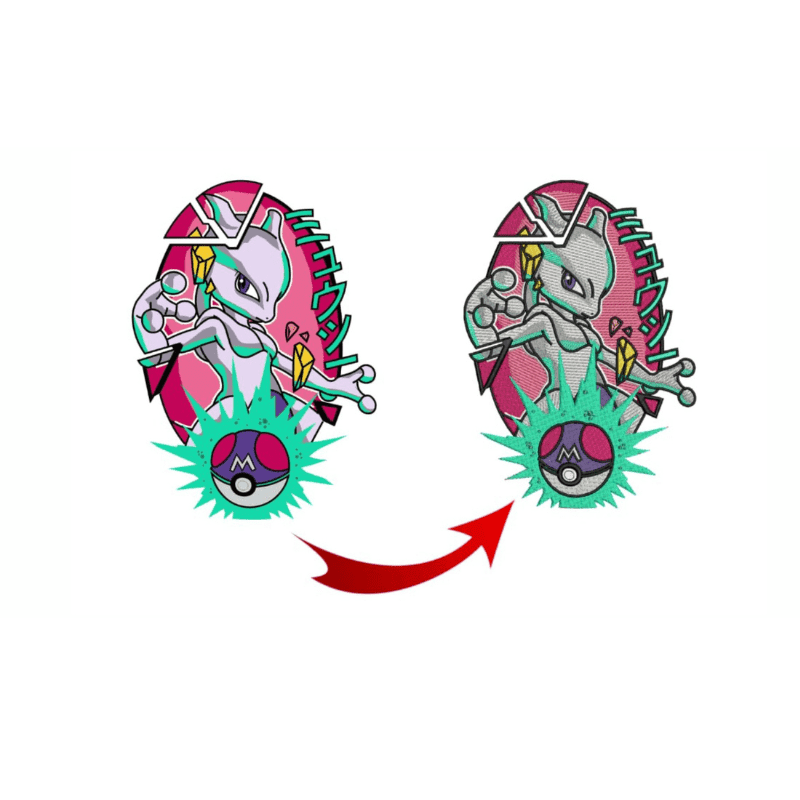Check Out Different Types of Needlework Digitizing Techniques
Embroidery digitizing has evolved considerably over the years, using a myriad of methods to bring styles to life in the electronic realm. The realm extends to a lot more sophisticated techniques like photorealistic embroidery digitizing and the remarkable realm of 3D embroidery digitizing.
Conventional Hand Needlework Digitizing
Traditional hand needlework digitizing includes the procedure of converting intricate hand-stitched layouts right into digital formats for machine embroidery. This method requires experienced craftsmens to carefully assess the handmade layout and afterwards use specialized software to recreate it in an electronic layout. Each stitch, color, and information must be very carefully translated to ensure that the significance of the initial hand embroidery is preserved in the digital version.
Among the vital difficulties of typical hand embroidery digitizing is catching the intricacies and subtleties of the handmade style. Digitizing for Embroidery. Craftsmens must possess a deep understanding of different needlework methods, such as satin stitch, chain stitch, and French knots, to properly duplicate these techniques in the digital realm. Additionally, they require to have an eager eye for information to make sure that the electronic layout keeps the same degree of virtuosity and workmanship as the original hand-stitched item
Punching Strategy
To perfectly change from conventional hand needlework digitizing to the punching technique, craftsmens should now focus on transforming the elaborate digital styles right into instructions that needlework devices can translate. The punching strategy includes utilizing specialized software program to create electronic documents that include commands for the embroidery machine to comply with. This procedure calls for a deep understanding of not simply the style itself yet also the capabilities and constraints of the needlework device.

Auto-Digitizing Software Program Programs
Embroidery digitizing has been reinvented by the arrival of auto-digitizing software application, offering craftsmens with sophisticated tools to convert electronic designs into embroidery equipment instructions efficiently. Auto-digitizing software application programs utilize algorithms to assess electronic explanation pictures or vector documents and generate needlework designs instantly. These programs permit quick and exact conversion of intricate layouts right into pop over to these guys stitch patterns, saving effort and time for embroiderers.
Among the essential benefits of auto-digitizing software application is its user-friendly interface, making it accessible to both newbies and knowledgeable digitizers. These programs usually include features such as stitch modifying devices, thread color matching, and the capability to sneak peek the final stitched design. Furthermore, auto-digitizing click over here software can take care of intricate designs with numerous shades and elaborate details, producing premium embroidery data ideal for different garments and fabric projects.
While auto-digitizing software application offers ease and effectiveness, it is important for individuals to understand the limitations of automated digitizing. Fine-tuning and manual adjustments might still be called for to attain the wanted needlework quality, especially when taking care of elaborate or special styles. By leveraging the capacities of auto-digitizing software alongside manual digitizing techniques, craftsmens can enhance their needlework digitizing process and produce stunning embroidered pieces.
Photorealistic Needlework Digitizing
Utilizing sophisticated electronic imaging methods, attaining photorealistic results in needlework digitizing has actually come to be a popular ability among contemporary craftsmens. This method includes transforming high-resolution photos into elaborate stitch patterns that very closely resemble the initial layout, causing needlework items that show natural information and deepness.
To accomplish photorealistic needlework digitizing, craftsmens need to have an eager eye for detail and a comprehensive understanding of how various stitch kinds and densities can impact the last end result. By carefully drawing up each shade and color in the picture, embroiderers can create an electronic file that guides the needlework maker to duplicate the nuances of the initial photo properly.
Photorealistic embroidery digitizing is particularly prominent in producing custom designs for clothing, home decoration, and art pieces where catching the significance of a picture or art work is crucial. This strategy allows craftsmens to transform memories, landscapes, portraits, and complex art work right into magnificent embroidered masterpieces that showcase a blend of traditional craftsmanship and advanced modern technology.
3D Needlework Digitizing
With the development of digital imaging methods in achieving photorealistic results in embroidery digitizing, the expedition of 'D Embroidery Digitizing' uses a new dimension to the intricacies of layout replication. 'D Needlework Digitizing' describes the three-dimensional digitizing strategy that includes deepness and texture to needlework layouts, creating an extra practical and aesthetically enticing end product. This technique utilizes software that simulates the effect of light and darkness on the needlework style, enhancing its total aesthetic influence.
Among the essential benefits of 'D Embroidery Digitizing' is its capability to make layouts look more lifelike and dynamic. By adding deepness to the needlework design, the end product shows up more realistic and exciting (Digitizing for Embroidery). In addition, this method enables more imaginative flexibility in style implementation, allowing embroiderers to try out different appearances and results that were previously testing to attain
Final Thought
